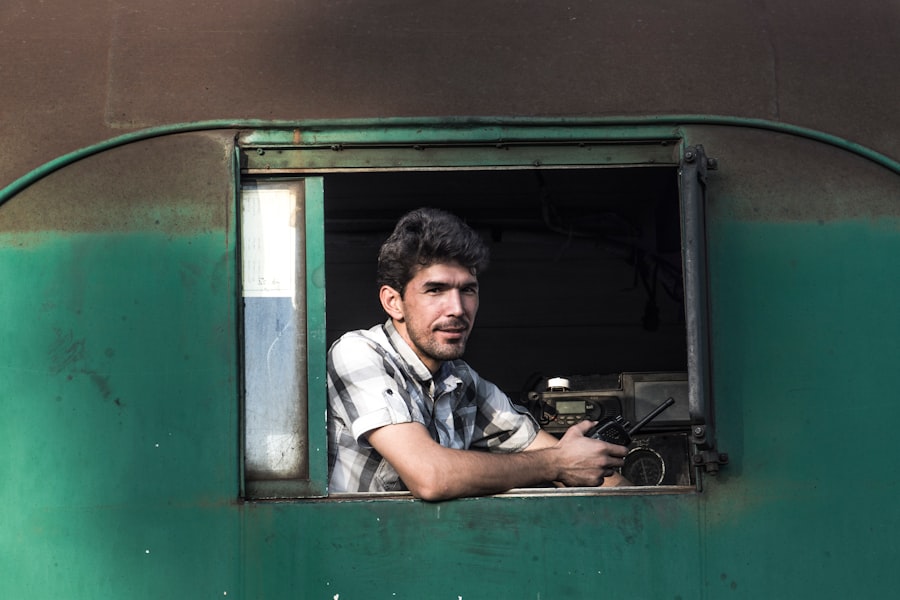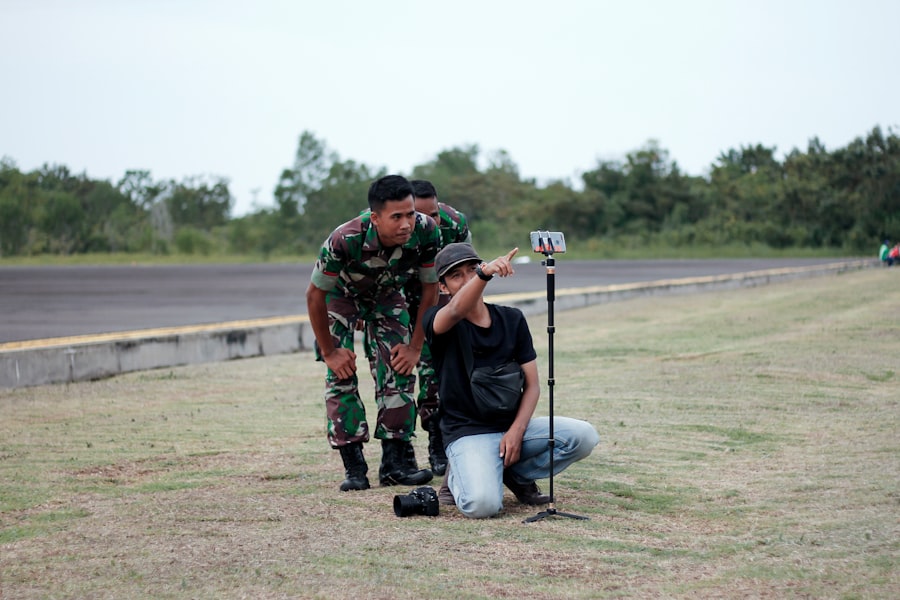The capture of Saddam Hussein marked a pivotal moment in the history of Iraq and the broader Middle East. On December 13, 2003, U.S.
The operation, codenamed “Operation Red Dawn,” was the culmination of an extensive intelligence effort that had been ongoing since the onset of the Iraq War in March of that year. Hussein was found in a makeshift bunker, living in squalor, and was captured without a fight. His arrest was not only a significant military achievement but also symbolized the end of an era of brutal dictatorship that had lasted for over three decades.
The images of Saddam Hussein, disheveled and unkempt, contrasted sharply with the image of the powerful leader who had once ruled Iraq with an iron fist. His capture was broadcast around the world, eliciting a mix of relief and skepticism. Many viewed it as a turning point in the U.S.-led invasion of Iraq, while others questioned whether his arrest would lead to stability or further chaos in a nation already torn apart by conflict.
The event ignited a flurry of reactions from various stakeholders, including Iraqi citizens, international leaders, and military officials, all eager to assess the implications of this significant development.
Key Takeaways
- Saddam Hussein was captured by US forces in December 2003, hiding in a small underground hole near his hometown of Tikrit.
- The United States played a significant role in the capture of Saddam Hussein, leading the operation and providing intelligence support.
- The Iraqi people reacted with a mix of relief, joy, and skepticism to Saddam’s capture, as they were hopeful for a better future but also feared ongoing violence and instability.
- Saddam Hussein faced charges of crimes against humanity, including the killing of 148 Shi’ite men in the town of Dujail in 1982.
- The legal process of Saddam’s trial was marred by controversy, including the assassination of judges and defense lawyers, leading to concerns about its fairness.
- Saddam Hussein was found guilty and sentenced to death by hanging, a decision that sparked both celebration and protests in Iraq.
- The international community had mixed reactions to Saddam’s trial, with some supporting the verdict and others criticizing the process as politically motivated.
- The legacy of Saddam Hussein’s trial includes a sense of justice for his victims and a precedent for holding dictators accountable for their actions.
- Saddam’s capture and trial had a significant impact on Iraq, contributing to ongoing sectarian tensions and the rise of insurgent groups.
- The capture and trial of Saddam Hussein taught important lessons about the challenges of transitional justice and the complexities of post-conflict reconciliation.
The Role of the United States in the Capture
The United States played a crucial role in the capture of Saddam Hussein, employing a combination of military might and intelligence operations to locate him. Following the invasion of Iraq, U.S. forces faced the daunting task of dismantling Hussein’s regime while simultaneously searching for the elusive leader himself.
The U.S. military established a network of informants and utilized advanced surveillance technology to track Hussein’s movements. This multifaceted approach ultimately led to the successful operation that resulted in his capture.
In addition to military efforts, the U.S. government sought to portray Hussein’s capture as a victory for democracy and justice in Iraq.
However, this narrative was met with skepticism by many Iraqis who had suffered under Hussein’s regime. The complexities surrounding U.S. involvement in Iraq raised questions about the true motivations behind the capture and whether it would genuinely lead to positive change for the Iraqi people.
The Reaction of the Iraqi People to Saddam’s Capture

The reaction of the Iraqi people to Saddam Hussein’s capture was deeply divided, reflecting the complex social and political landscape of the country. For many Iraqis, particularly those who had suffered under his oppressive rule, his arrest was a moment of jubilation. Crowds gathered in streets across Iraq, celebrating what they perceived as a long-awaited end to tyranny.
The sense of relief was palpable, as citizens expressed hope for a future free from fear and repression. Conversely, there were also segments of the population that viewed Hussein’s capture with skepticism or outright hostility. Supporters of his regime felt betrayed by the U.S.
invasion and subsequent actions that led to his downfall. They feared that his arrest would not bring about stability but rather exacerbate existing tensions within Iraqi society. This dichotomy in reactions underscored the challenges facing Iraq as it navigated its post-Hussein reality, revealing deep-seated divisions that would continue to shape the nation’s trajectory.
The Trial of Saddam Hussein
Saddam Hussein’s trial began on October 19, 2005, and quickly became one of the most high-profile legal proceedings in modern history. The trial was held in Baghdad and was overseen by an Iraqi Special Tribunal established specifically to address crimes committed during Hussein’s regime. The proceedings were marked by intense media coverage and drew international attention as they unfolded against the backdrop of ongoing violence and instability in Iraq.
The trial itself was fraught with challenges, including security concerns for both the judges and witnesses involved. Many feared that Hussein’s supporters would retaliate against those who testified against him. Despite these challenges, the tribunal aimed to provide a platform for victims to share their stories and seek justice for the atrocities committed during Hussein’s rule.
The trial became a symbol of Iraq’s struggle to confront its past while attempting to build a more democratic future.
The Charges Against Saddam Hussein
Saddam Hussein faced multiple charges during his trial, primarily centered around crimes against humanity and war crimes. The most notable charge was related to the 1982 massacre of Shiite villagers in Dujail, where hundreds were killed following an assassination attempt on Hussein. This incident exemplified the brutal tactics employed by his regime to suppress dissent and maintain control over the population.
In addition to the Dujail massacre, Hussein was also charged with various other offenses, including torture, forced disappearances, and systematic oppression of ethnic and religious groups. These charges highlighted not only the scale of human rights abuses committed during his rule but also the broader implications for justice and accountability in post-Saddam Iraq. The tribunal sought to address these heinous acts while grappling with the complexities of a society still reeling from years of violence.
The Legal Process of Saddam’s Trial

The legal process surrounding Saddam Hussein’s trial was complex and often contentious. The tribunal faced criticism from various quarters regarding its legitimacy and fairness. Some argued that it was heavily influenced by U.S.
interests and lacked impartiality, while others contended that it represented an essential step toward justice for victims of Hussein’s regime. The proceedings were characterized by dramatic moments, including outbursts from Hussein himself, who often dismissed the court’s authority and maintained his innocence. The trial also featured testimonies from numerous witnesses who recounted their harrowing experiences under Hussein’s rule.
These accounts provided a chilling glimpse into the extent of human rights violations perpetrated by his regime. However, the legal process was marred by delays and security concerns, leading to frustrations among victims seeking justice. Despite these challenges, the tribunal aimed to uphold legal standards while navigating the tumultuous political landscape of Iraq.
The Verdict and Sentencing of Saddam Hussein
On November 5, 2006, Saddam Hussein was found guilty of crimes against humanity for his role in the Dujail massacre and was sentenced to death by hanging. The verdict was met with mixed reactions both within Iraq and internationally. For many Iraqis who had suffered under his regime, it represented a long-awaited moment of justice; however, others viewed it as a politically motivated decision that failed to address the broader issues facing Iraq.
Hussein’s sentencing sparked protests among his supporters, who viewed him as a martyr rather than a criminal. This division underscored the ongoing tensions within Iraqi society and highlighted the challenges facing the new government as it sought to unify a fractured nation. The execution took place on December 30, 2006, further polarizing opinions about Hussein’s legacy and leaving an indelible mark on Iraq’s post-war narrative.
International Reaction to Saddam’s Trial
The international reaction to Saddam Hussein’s trial was varied and often contentious. Many world leaders expressed support for the tribunal as a necessary step toward accountability for human rights abuses. They viewed it as an opportunity for Iraq to confront its past and establish a foundation for justice in a post-Saddam era.
Human rights organizations also closely monitored the proceedings, emphasizing the importance of fair trials in addressing historical injustices. Conversely, critics raised concerns about the legitimacy of the tribunal and its potential biases. Some argued that it lacked independence from U.S.
influence and questioned whether it could deliver impartial justice given the ongoing conflict in Iraq. This skepticism reflected broader debates about international law and accountability in post-conflict societies, highlighting the complexities involved in seeking justice for atrocities committed during authoritarian regimes.
The Legacy of Saddam Hussein’s Trial
The legacy of Saddam Hussein’s trial is multifaceted and continues to resonate within Iraq and beyond. On one hand, it represented a significant moment in the pursuit of justice for victims of human rights abuses; on the other hand, it underscored the challenges inherent in reconciling a nation with its past while striving for a more democratic future. The trial served as a reminder of the atrocities committed under Hussein’s rule but also highlighted ongoing divisions within Iraqi society.
Moreover, Hussein’s trial raised important questions about accountability and justice in post-conflict settings. It prompted discussions about how nations can effectively address historical injustices while fostering reconciliation among diverse communities. As Iraq continues to grapple with its legacy, lessons learned from Hussein’s trial may inform future efforts to confront past atrocities and build a more inclusive society.
The Impact of Saddam’s Capture and Trial on Iraq
The impact of Saddam Hussein’s capture and subsequent trial on Iraq has been profound and far-reaching. His arrest marked a significant turning point in the U.S.-led invasion, altering perceptions both domestically and internationally regarding Iraq’s future trajectory. While some hoped that his capture would lead to stability and peace, others feared it would exacerbate existing tensions within an already fractured society.
In many ways, Hussein’s trial became emblematic of Iraq’s struggle for identity in a post-Saddam era. It highlighted deep-seated divisions among various ethnic and religious groups while simultaneously providing an opportunity for victims to seek justice for past atrocities. However, as violence continued to plague Iraq following his execution, questions remained about whether true reconciliation could be achieved amidst ongoing conflict.
Lessons Learned from the Capture and Trial of Saddam Hussein
The capture and trial of Saddam Hussein offer valuable lessons regarding accountability, justice, and reconciliation in post-conflict societies. One key takeaway is the importance of establishing independent judicial processes that can operate free from political influence or external pressures. Ensuring fairness in legal proceedings is essential for fostering public trust in institutions tasked with delivering justice.
Additionally, addressing historical injustices requires sensitivity to societal divisions and an understanding of how past grievances can shape present dynamics. Efforts toward reconciliation must prioritize inclusivity while acknowledging diverse perspectives within affected communities. Ultimately, the experiences surrounding Saddam Hussein’s capture and trial underscore that confronting a nation’s past is crucial for building a more just and equitable future.
After the capture of Saddam Hussein in December 2003, he was held in U.S. custody and faced trial for crimes against humanity. This pivotal moment in history marked the end of his regime and led to his execution in December 2006. For more detailed insights into the events following his capture and the impact on Iraq, you can read a related article on this topic by visiting Hey Did You Know This. This article provides a comprehensive overview of the aftermath of Hussein’s capture and the subsequent changes in Iraq’s political landscape.
WATCH NOW! How the US Hunted and Captured Saddam Hussein: The Untold Story of Operation Red Dawn
FAQs
What happened to Saddam Hussein after his capture?
After his capture in December 2003, Saddam Hussein was held in U.S. custody at various locations in Iraq.
What was the legal process for Saddam Hussein after his capture?
Saddam Hussein was put on trial by the Iraqi Special Tribunal for crimes against humanity, including the 1982 killing of 148 Shiites in Dujail. He was found guilty and sentenced to death by hanging.
When was Saddam Hussein executed?
Saddam Hussein was executed on December 30, 2006, at a facility in northern Baghdad.
What was the reaction to Saddam Hussein’s execution?
The execution of Saddam Hussein was met with mixed reactions, with some Iraqis celebrating his death while others criticized the manner in which it was carried out. The execution also sparked international debate and controversy.
